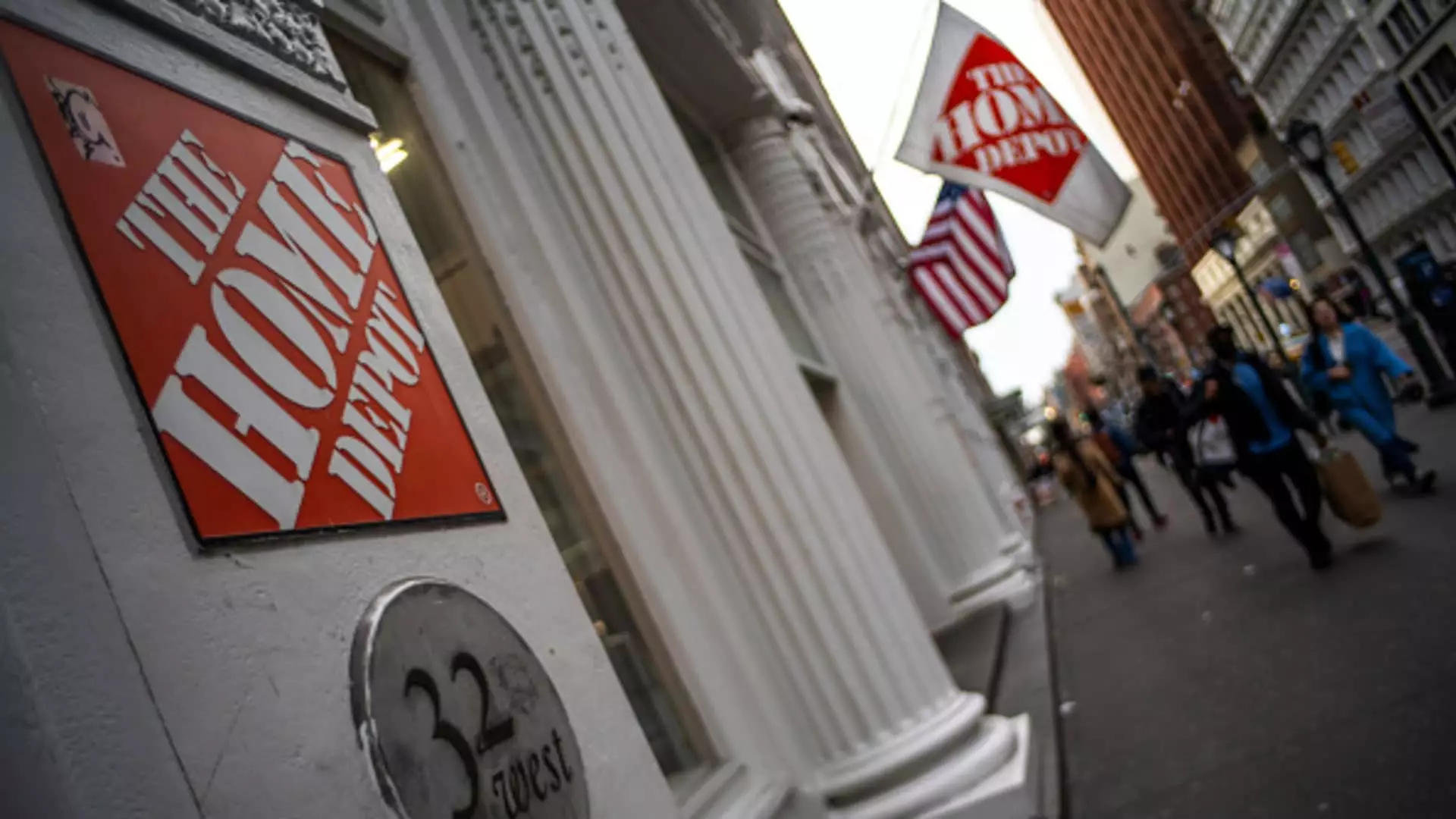In the midst of ongoing economic fluctuations, the sentiment in the home improvement sector remains surprisingly optimistic, particularly about major players like Home Depot. A recent survey conducted by Morgan Stanley, involving both general contractors and specialist painters, sheds light on their outlook. They see signs of stability in the market, which is an encouraging note amidst the cacophony of uncertainty that has enveloped the housing industry. With a growing backlog of projects and a forecast for heightened demand in the latter half of 2025, the findings indicate that contractors expect a robust uptick in business.
However, this optimism does not come without its qualms. The looming challenge of rising material costs due to inflation and the uncertainty of tariffs serves as a disconcerting backdrop. It raises critical questions about how resilient these small businesses will be in the long-term face of these pressures. For a sector that relies heavily on parting homeowners from their hard-earned cash, any uptick in costs or hesitation among consumers could stifle the momentum that these contractors currently enjoy.
The Duality of Demand: Larger Projects vs. Smaller Jobs
Interestingly, there’s an observable shift in demand patterns. Contractors express a notable rebound in larger projects, suggesting a consumer willingness to invest more significantly in home improvements rather than opting for smaller, quick-fix solutions. This trend speaks volumes about the consumer psyche, indicating a broader willingness to enhance living conditions rather than compromise. Homeowners seem inclined toward projects that add tangible value, reflecting a deeper trend of investing in homes that have aged over the last few decades.
Yet, it’s essential to contextualize this demand within the larger economic picture. The uncertainty surrounding tariffs and inflation looms large and casts shadows on future spending decisions. Will homeowners remain unfazed as economic pressures mount? Or will they reevaluate their priorities amid rising costs? The answer to these questions is paramount for entities like Home Depot, which must be adept at navigating the treacherous waters of the current economy.
Tariffs and Their Aftermath: A Worrying Precursor
Coinciding with the survey’s timing was the “Liberation Day announcement,” which has left many contractors bracing for the fallout. Although this came a few days after the poll, it undoubtedly adds layers of complexity to understanding the contractors’ sentiments. Given that tariffs ranked as the third-greatest concern among contractors, the survey may not fully encapsulate their current anxiety regarding economic policy uncertainties.
Home Depot, traditionally a resilient player, has reaffirmed its commitment to manage these uncertainties in collaboration with its vendors. Yet, one can’t help but wonder if their wait-and-see approach may be their undoing. As the CEO, Ted Decker, has pointed out, the aging U.S. housing stock calls for continual investment, yet escalating costs could significantly alter the equation. The blend of feeling optimistic and bracing for adverse market influences presents a tension that cannot be ignored.
CEO’s Vision: The Path Forward for Home Depot
Ted Decker’s interviews have often conveyed a picture of resilience and proactive adaptation. His assertion about the increasing maintenance needs of older homes echoes the reality facing many homeowners today. If Home Depot can capitalize on this trend, it might cement its position as an indispensable resource for homeowners eager to refine their living spaces. Promoting this narrative could bolster their brand loyalty and ensure sustained revenue.
While Decker paints a picture of future prosperity, the reality of the economy begs for caution. Analysts have recently lowered Home Depot’s target stock price from $450 to $410. This reevaluation begs the question: Is this merely a prudent corrective measure in light of predictable economic uncertainty, or does it signify deeper issues beneath the surface?
Investment Strategies: Following the Pundit’s Advice
Market experts, like Jim Cramer, have passionately advocated for a “long” position on Home Depot, framing it as not just a retail giant but as a player with significant growth potential. Nevertheless, one must be cautious. If the macroeconomic environment shifts unfavorably, even expert recommendations may not shield investors from potential downturns.
Cramer emphasizes that a historically low mortgage rate could spur housing activity, translating to increased sales for Home Depot. But is this optimistic outlook based on solid ground, or are we witnessing a speculative bubble waiting to burst? This critical perspective is essential for any potential investor who dares to venture into this volatile market.
Home Depot finds itself at a crucial juncture, poised between promise and peril as it navigates a landscape fraught with both opportunity and challenge. The forthcoming decisions made by consumers, contractors, and economic policymakers will determine whether Home Depot can continue to thrive or if it will succumb to the pressures threatening its foundations.

